The town fighting its killer reputation
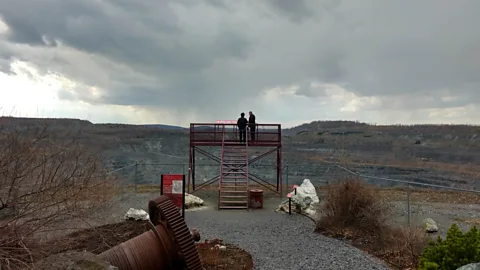 Lorcan Archer
Lorcan ArcherA small Canadian mining town is trying to leave its past behind, but can Asbestos ever escape the shadow cast by its history?
Nestled amid the rolling green countryside of south-eastern Quebec is a place that has been described as the most dangerous town in Canada.
This quiet settlement, just east of a kink in the Nicolet River, thrived on a valuable mineral hidden in the rocks beneath it for more than 110 years. Mining was so important to the local economy that the town adopted its name – welcome to Asbestos.
Home to the world’s largest asbestos mine until 2012, the town was changed forever when the poisonous nature of the mineral that gave it its name and identity forced the mine to close for good.
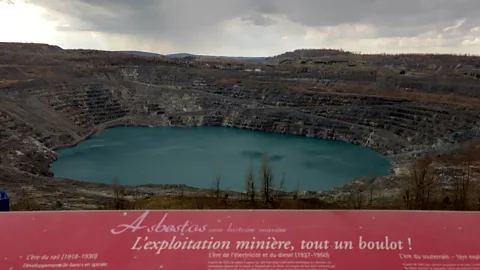 Lorcan Archer
Lorcan ArcherThe closure of the Jeffrey mine signalled the end of an industry that had provided steady, dependable employment for generations, but had also taken its toll on the health and wellbeing of the local population.
The mine also left another legacy almost as contentious as the mineral it extracted – the name of the town itself. Local businesses, for example, encountered difficulties trying to cross the nearby US border with products or vehicles bearing the word “asbestos”
Yet in 2006, the town’s municipal council voted unanimously to hang on to the name and it has since stuck by the decision.
For a place that owes its existence to a now increasingly banned substance – progressing out of the shadow of the mine has involved imagination and risk-taking. But Asbestos may finally be shrugging off its toxic past.
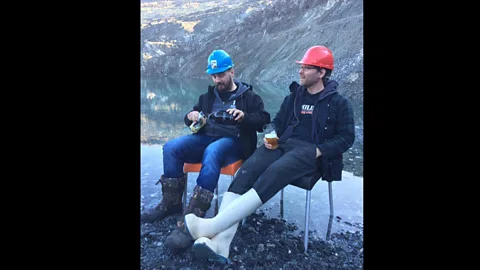 Moulin 7
Moulin 7Magic mineral
Asbestos is the name given to a naturally occurring set of six silicate-based minerals that form long, fibrous crystals. It has been mined around the world since ancient times for its tough, fire-resistant properties.
During the nineteenth century, settlers discovered that south-eastern Quebec contained several substantial asbestos deposits. Lying close to the US/Canada border, these deposits were big enough to justify large-scale mining.
The largest of these mining operations were at the town of Asbestos and nearby Thetford Mines. The Jeffrey mine in Asbestos provided half of the world’s supply of asbestos at one point, and helped make Canada the world’s largest asbestos exporter by the 1970s – with the industry delivering shipments valued at over $230 million CAD in 1973 ($1.35bn CAD when adjusted for inflation in 2018 or US $1.04bn).
 Mont Gleason
Mont GleasonOnce known as the ‘magic mineral’, became a much-utilised resource in many industries, particularly in construction – where it was commonly used as insulation – and ship-building. As recently as 2008, India was still importing asbestos in large quantities from Canadian mines.
However, in recent decades, growing evidence has pointed to the lethality of asbestos. Exposure to asbestos is now closely associated with the development of lung disease and mesothelioma - an aggressive form of cancer that has become the substance’s grim calling card.
Today, the huge open-pit mine at Asbestos lies silent, but it has left a gaping scar around 1,140 feet (350 metres) deep and more than two sq miles (six sq kilometres) in size. Canada is still struggling with the deadly legacy of the substance removed from this hole. Years after the mining ceased, Quebec leads Canada in reported cases of mesothelioma.
This year, the federal government will finally ban the "manufacture, use, import and export" of asbestos and products that contain it. The fact that this deadly substance is only being completely banned this year, decades after other countries made its use illegal, indicates how long asbestos has been an important part of Canada’s export economy.
Now deprived of its main source of income, Asbestos, has had to find other ways to support its population.
 Lorcan Archer
Lorcan ArcherMine beer
But it is a challenge that residents of the town have risen to with surprising energy.
Danick Pellerin’s story is one that many younger Asbestos citizens can relate to. Born to a generation that witnessed the final years of the industry in the town, he left in search of work.
But in 2014, beer brought him back to Asbestos, along with a desire to play his part in re-invigorating the town. Along with another local, Yan St-Hilaire, he founded the Moulin 7 microbrewery with the help of provincial government funding.
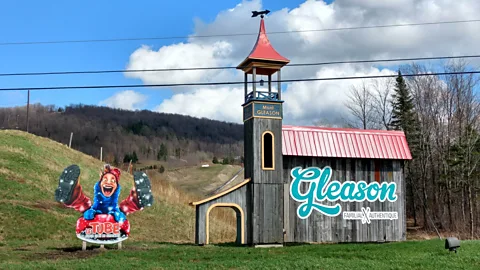 Lorcan Archer
Lorcan Archer“We had always worked outside Asbestos, so our priorities were to make good beer, and to make it locally,” says Pellerin. “Some people can have a dim view of this community, or that it is boring, or not much is going on, but it’s obvious that there is a whole lot going on. It’s a new environment here.”
Setting up a brewery in a town called Asbestos might not seem like a shrewd business move at first. Especially as the brewery is located just over 300 feet (100m) from the edge of the open mine. But rather than hide the fact, Pellerin and St-Hilaire whole-heartedly celebrate their link to the town’s mining heritage.
St-Hilaire’s father, Normand, worked at the Jeffrey mine, and the pair have tried to reflect the town’s history in the names of their beers. Among its products are a lager called Mineur (Miner) and an American pale ale called Spello – a mining term for a short break.
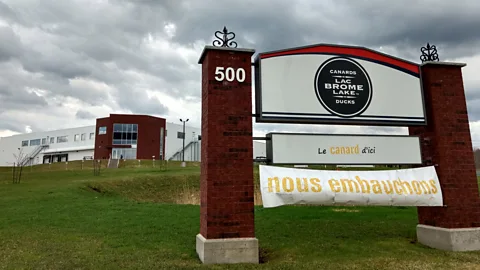 Lorcan Archer
Lorcan ArcherThe pair even brew a white Indian Pale Ale called ‘La Ciel Ouvert’ (The Open Sky), using water taken from a lake that has accumulated at the bottom of the mine. When that beer was released, it got people talking, but Pellerin was unperturbed.
“We had the water analysed and it is perfect,” he says. “People wanted to taste it.”
The award-winning brewery is now draws Quebec’s many bikers who stop off at Asbestos while touring the countryside.
“We’re not on a major tourist route, but people come regardless,” explains Pellerin. “At the moment, we employ about 19 employees, between the bar and the brewery. We’ve experienced good growth, and we’re hoping to increase production by 30% next year.”
Pellerin is confident the town is finding its feet again, despite keeping its toxic name.
“People are coming back, with experiences in the cities and from further afield,” he says. “I think they’re coming back to a place that has changed, and that is much more open, and with less of a closed mentality.
Rising to the challenge
Hugues Grimard, the Mayor of Asbestos, recognises that the roughly 7,000 inhabitants of Asbestos faced a major challenge when a controversial $58 million Canadian ($45 million US) government loan to support the mine was cancelled in 2012, leading to its closure.
The town has seen a decades-long exodus as the industry has waned, with its population falling from more than 10,000 inhabitants at the mine’s peak in the 1970s, to just over 6,000 in 1999, the year the UK fully banned asbestos imports. The mine’s final shuttering was a blow, but it hasn’t resulted in a fresh exodus.
“For us, the important thing was to be optimistic,” says Grimard. “To rise to the challenge that the government had left us with. We worked to bring everyone (in the community) together – industry, economic partners and elected officials, to put together a solid base.”
And there has been some encouraging news since the last census in 2011, with unemployment in the town falling from 12.4% to 7.6% in 2016.
The town did have assets beyond the mine to help begin the recovery – the proximity of the US border made it home to several transportation companies, while agriculture has provided a fall-back employer. Responsiveness is also part of the town’s strategy now.
“That way, if opportunity calls, we can respond as a priority,” says Grimard. “At present, I can say that we have met this challenge in diversifying our economy.”
One big win since the mine closed has been the establishment of a regional processing centre for one of Canada’s more gourmet food products – ducks. It provides jobs for over a hundred workers and a ‘now hiring’ sign still hangs outside the factory, despite opening in 2016.
The town’s association with a product like asbestos hasn’t stood in the way of the company behind the facility, Brome Lake Ducks. With increasing demand from Canadian consumers and access to a new market for duck meat sales in Mexico, the company is aiming to produce four million ducks per year by 2020.
Snow not minerals
But the drive to rebuild the town’s economy isn’t restricted to food and drink. In the hills surrounding Asbestos is another resource aside from the once-prized minerals – snow.
Just a few minutes north of the town lies the ski resort of Mont Gleason, which is a major seasonal employer in the area during Quebec’s snowy winters. Operating since 1968, the resort is set to celebrate 100 years in operation in December.
 Harry Rowed/Wikipedia Commons
Harry Rowed/Wikipedia CommonsMont Gleason differs from many European commercial ski resorts by operating as a not-for-profit, with deep roots in nearby communities, including Asbestos. It has four ski lifts and almost 10 km of slopes.
While the work at Mont Gleason tends to evaporate in the spring along with the snow, during the winter it provides regular employment.
“We have more than 250 people working in the winter season” explains Maryse Gingras, from nearby Victoriaville, who heads up sustainable development at the ski resort. “A lot of people are repeat employees, but we also employ a lot of students and retired people. They’re all in very different kinds of positions – with people working the chair lifts, at the ski schools, or inside at the restaurant. We are most busy from December to March.”
Gingras points to constant re-investment as a major reason that Mont Gleason has stayed viable, even through tough economic periods and harsh winters.
“[This year] we have had good growth in numbers,” notes Gingras. “We are planning to add a new four-person chair lift and re-model the chalets in the coming two years. You have to re-invest every year.”
 Mont Gleason
Mont GleasonRe-mining the remnants
Walking around Asbestos and the surrounding area, it is hard not to notice the legacy of its mining past littering the landscape. Tailings, the towering piles of debris left by mining activity, are especially evident. These mounds of crushed rock and minerals are still piled up close to homes and buildings.
There have been attempts in the past to make use of this mining waste. Mine tailings were used in the town of Thetford Mines to provide extra grip on the roads during winter, for instance, but the practice was swiftly stopped amid concerns over its impact on air quality.
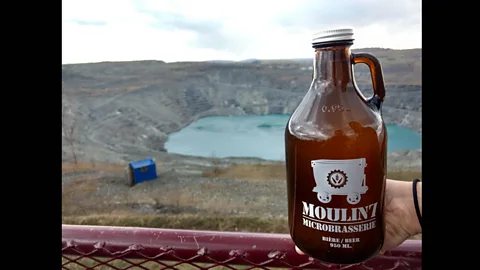 Lorcan Archer
Lorcan ArcherThere is, however, renewed interest in these tailings from industries that are hoping to re-mine them for other valuable chemicals. In particular, the tailings have a high magnesium content, which is in high demand for consumer electronics like mobile phones and electric cars.
With talk of trade sanctions against China – currently the world’s main supplier of magnesium – being openly discussed by the current US administration, Asbestos could find a new lucrative trade for the waste left by its former industry.
A new project has been set up under the banner of the Alliance Magnesium (AMI), which has established a pilot facility near the town to test the viability of extracting magnesium from nearby tailings. The company expects 70 jobs to be created if operations shift to commercial production.
Whether this will result in long-term jobs in the area remains to be seen. A similar project set up prior to the closure of Jeffrey Mine eventually ran out of cash, but Alliance Magnesium insists that improved, greener extraction technologies that set it apart from those earlier ventures. “
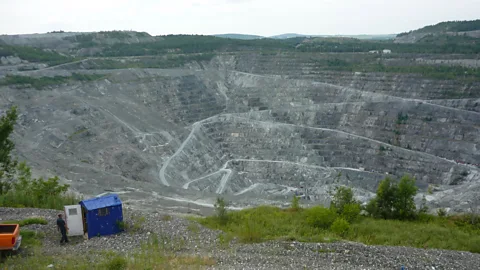 Cjp24/Wikipedia Commons
Cjp24/Wikipedia CommonsCrypto-mining
Another very different type of mining could potentially make its way to the Asbestos region too.
An hour to the south, in the university town of Sherbrooke, one of the province’s largest Bitcoin mining operations has popped up, to the tune of $250 million Canadian ($195 million US), and the cryptocurrency firm BitFarms is expanding across southern Quebec.
In March, local media reported on potential plans for a cryptocurrency operation at the abandoned mine works at Thetford Mines. Cheap electricity plus large facilities and pre-existing large-scale electrical connections make it an attractive site.
But Asbestos Mayor Hugues Grimard is careful not to commit too readily to the idea of something similar in Asbestos. “If a developer approaches us, we’ll look at the project,” he insists, but adds that priority needs to be given to developments that stimulate the local economy.
Quebec premier Philippe Couillard meanwhile has expressed scepticism regarding the proliferation of cryptocurrency mining facilities around the province, doubting the actual benefit to communities.
But even without this sort of high-tech industry, there can be no doubt that Asbestos is undergoing a transformation that could see the town emerge from the cloud cast by the mineral it supplied around the world.
For the people who live there, the name of their town is something they intend to be proud of, rather than ashamed.
To comment on this story or anything else you have seen on BBC Capital, please head over to our Facebook page or message us on Twitter.
If you liked this story, sign up for the weekly bbc.com features newsletter called "If You Only Read 6 Things This Week". A handpicked selection of stories from BBC Future, Culture, Capital and Travel, delivered to your inbox every Friday.
